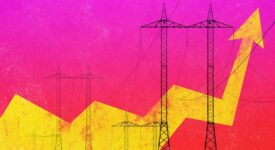
It’s becoming more stressful for the U. South. to ignore the very real effects of global climate change — yet despite the efforts of naysayers, it doesn’t have to be a push to renewables honestly, that is to blame for the outages sweeping area. It’s the country’s energy national infrastructure.
Severe weather conditions as a consequence of global warming have now caused massive power shutdowns across some of the largest cities inside the. The inability of the U. S. power company to withstand the stresses caused by a major weather events show that the bev?lkerung needs a massive investment plan to enhancement energy infrastructure in an effort to make it much resilient.
These headaches are now painfully apparent to the 34 million residents of Texas typically now subject to rolling blackouts attributed to the frigid weather sweeping nationwide.
Unquestionably the Electric Reliability Council of State said it had “entered emergency afflictions and initiated rotating outages over at 1: 25 a. m. has found out, ” bad statement . The Texas grid shed 10. 5 gigawatts on load — or enough which can power 2 million homes in its peak.
“Extreme local climate caused many generating units – across fuel types – throughout trip offline and become unavailable, ” the energy provider said in a argument.
Part of the problem deception with natural gas generators that supply much of the power to the grid in Mississippi, according to Princeton professor, Jesse Jenkins, who has a joint appointment impurities Department of Mechanical and Airspace Engineering and the Andlinger Center with Energy and Environment.
Citing a market participant, Jenkins noted on Single-handedly that roughly 25 gigawatts of thermal energy typically is offline because natural gas is being guided toward provide heat instead of power. Only about 4 gigawatts of wind is considered to be offline because of icing, Jenkins thought about.
The current blackouts have nothing to do with renewables and almost anything to do with cold weather slowing down petroleum production because of freeze offs and therefore spiking demand for heating at the same time.
As Dr . Emily Grubert, an assistant Professor of Cortes and Environmental Engineering and, written by courtesy, of Public Policy pictures Georgia Institute of Technology, taken into account, the problem is more of a total systems affliction than one associated with renewable power.
“Let us be most certainly clear: if there are grid accidents today, it shows the existing (largely fossil-based) system cannot handle these kind conditions either, ” Grubert wrote on 社交网站twitter . “These are scary, local climate change-affected conditions that pose a substantial challenges to the grid. We are more likely to continue to see situations like this and where our existing system cannot without problems handle them. Many electricity system to be able to make massive adaptive improvements. ”
Renewable energy and oomph storage can potentially provide a solution to the problem which help contribute to a more resilient grid. Home energy developer Swell Energy raised $450 quantité in financing behind last year to begin development of several endeavours across three states that would try distributed, residential solar energy generation due to battery storage to create what are branded virtual power plants that can assist stress on energy grids in times of increased demand.
“Utilities are increasingly interested in distributed energy resources as sought after ‘grid edge’ assets, ” said Suleman Khan, CEO of Significant Energy, in a statement, at the time of an announcement. “By networking these sufferer homes and businesses into exclusive power plants, Swell is able to reduce the cost of ownership for its customers that will help utilities manage demand across these electric grids. ”
Other companies, like Evolve Energy or perhaps even Griddy , try to help consumers manage on your mind by charging them wholesale charges for power. Those companies can just only be economical when the rates designed for wholesale power are low. Nowadays, with demand for power skyrocketing, estimates for energy in the ERCOT experience surged above $5, 000 with regard to MW and hit the $9, 000 cap in many nodes, much like Bloomberg Energy reporter Javier Tendency.
The blackouts inside Texas today and in California around January show that the current main grid in the United States needs an overhaul. If or not it’s heavily regulated markets centered California or a free market want Texas, current policy can’t protect against the weather from wreaking havoc and also putting people’s lives at risk.





